Radeon RX Vega 5 [in 7 benchmarks]
Radeon RX Vega 5
Buy
- Interface
- Core clock speed
- Max video memory
- Memory type
- Memory clock speed
- Maximum resolution
Summary
AMD started Radeon RX Vega 5 sales 7 January 2020. This is a Vega architecture notebook card based on 7 nm manufacturing process and primarily aimed at gamers.
Power consumption is at 15 Watt.
It provides poor gaming and benchmark performance at
6.97%
of a leader’s which is NVIDIA GeForce RTX 4090.
GeForce RTX
4090
Compare
General info
Some basic facts about Radeon RX Vega 5: architecture, market segment, release date etc.
| Place in performance rating | 441 | |
| Value for money | 12.67 | |
| Architecture | Vega (2017−2021) | |
| GPU code name | Vega | |
| Market segment | Laptop | |
| Release date | 7 January 2020 (3 years old) |
|
| Current price | $287 | of 49999 (A100 SXM4) |
Value for money
To calculate the index we compare the characteristics of graphics cards against their prices.
- 0
- 50
- 100
Technical specs
Radeon RX Vega 5’s general performance parameters such as number of shaders, GPU base clock, manufacturing process, texturing and calculation speed. These parameters indirectly speak of Radeon RX Vega 5’s performance, but for precise assessment you have to consider its benchmark and gaming test results.
These parameters indirectly speak of Radeon RX Vega 5’s performance, but for precise assessment you have to consider its benchmark and gaming test results.
| Pipelines / CUDA cores | 320 | of 20480 (Data Center GPU Max NEXT) |
| Boost clock speed | 1400 MHz | of 3599 (Radeon RX 7990 XTX) |
| Manufacturing process technology | 7 nm | of 4 (GeForce RTX 4080 Ti) |
| Thermal design power (TDP) | 15 Watt | of 2400 (Data Center GPU Max Subsystem) |
Memory
Parameters of memory installed on Radeon RX Vega 5: its type, size, bus, clock and resulting bandwidth. Note that GPUs integrated into processors have no dedicated memory and use a shared part of system RAM instead.
| Shared memory | — |
API support
APIs supported by Radeon RX Vega 5, sometimes including their particular versions.
| DirectX | 12_1 |
Benchmark performance
Non-gaming benchmark performance of Radeon RX Vega 5. Note that overall benchmark performance is measured in points in 0-100 range.
Overall score
This is our combined benchmark performance rating. We are regularly improving our combining algorithms, but if you find some perceived inconsistencies, feel free to speak up in comments section, we usually fix problems quickly.
RX Vega 5
6.97
- 3DMark Vantage Performance
- 3DMark 11 Performance GPU
- 3DMark Cloud Gate GPU
- 3DMark Fire Strike Score
- 3DMark Fire Strike Graphics
- 3DMark Ice Storm GPU
- Unigine Heaven 3.0
3DMark Vantage Performance
3DMark Vantage is an outdated DirectX 10 benchmark using 1280×1024 screen resolution. It taxes the graphics card with two scenes, one depicting a girl escaping some militarized base located within a sea cave, the other displaying a space fleet attack on a defenseless planet. It was discontinued in April 2017, and Time Spy benchmark is now recommended to be used instead.
It taxes the graphics card with two scenes, one depicting a girl escaping some militarized base located within a sea cave, the other displaying a space fleet attack on a defenseless planet. It was discontinued in April 2017, and Time Spy benchmark is now recommended to be used instead.
Benchmark coverage: 16%
RX Vega 5
11704
3DMark 11 Performance GPU
3DMark 11 is an obsolete DirectX 11 benchmark by Futuremark. It used four tests based on two scenes, one being few submarines exploring the submerged wreck of a sunken ship, the other is an abandoned temple deep in the jungle. All the tests are heavy with volumetric lighting and tessellation, and despite being done in 1280×720 resolution, are relatively taxing. Discontinued in January 2020, 3DMark 11 is now superseded by Time Spy.
Benchmark coverage: 16%
RX Vega 5
3535
3DMark Cloud Gate GPU
Cloud Gate is an outdated DirectX 11 feature level 10 benchmark that was used for home PCs and basic notebooks. It displays a few scenes of some weird space teleportation device launching spaceships into unknown, using fixed resolution of 1280×720. Just like Ice Storm benchmark, it has been discontinued in January 2020 and replaced by 3DMark Night Raid.
It displays a few scenes of some weird space teleportation device launching spaceships into unknown, using fixed resolution of 1280×720. Just like Ice Storm benchmark, it has been discontinued in January 2020 and replaced by 3DMark Night Raid.
Benchmark coverage: 13%
RX Vega 5
18282
3DMark Fire Strike Score
Benchmark coverage: 13%
RX Vega 5
2232
3DMark Fire Strike Graphics
Fire Strike is a DirectX 11 benchmark for gaming PCs. It features two separate tests displaying a fight between a humanoid and a fiery creature seemingly made of lava. Using 1920×1080 resolution, Fire Strike shows off some realistic enough graphics and is quite taxing on hardware.
Benchmark coverage: 13%
RX Vega 5
2438
3DMark Ice Storm GPU
Ice Storm Graphics is an obsolete benchmark, part of 3DMark suite. Ice Storm was used to measure entry level laptops and Windows-based tablets performance. It utilizes DirectX 11 feature level 9 to display a battle between two space fleets near a frozen planet in 1280×720 resolution. Discontinued in January 2020, it is now superseded by 3DMark Night Raid.
Ice Storm was used to measure entry level laptops and Windows-based tablets performance. It utilizes DirectX 11 feature level 9 to display a battle between two space fleets near a frozen planet in 1280×720 resolution. Discontinued in January 2020, it is now superseded by 3DMark Night Raid.
Benchmark coverage: 8%
RX Vega 5
128628
Unigine Heaven 3.0
This is an old DirectX 11 benchmark using Unigine, a 3D game engine by eponymous Russian company. It displays a fantasy medieval town sprawling over several flying islands. Version 3.0 was released in 2012, and in 2013 it was superseded by Heaven 4.0, which introduced several slight improvements, including a newer version of Unigine.
Benchmark coverage: 4%
RX Vega 5
26
Is Radeon RX Vega 5 good for gaming?
Let’s see how good Radeon RX Vega 5 is for gaming. Particular gaming benchmark results are measured in frames per second.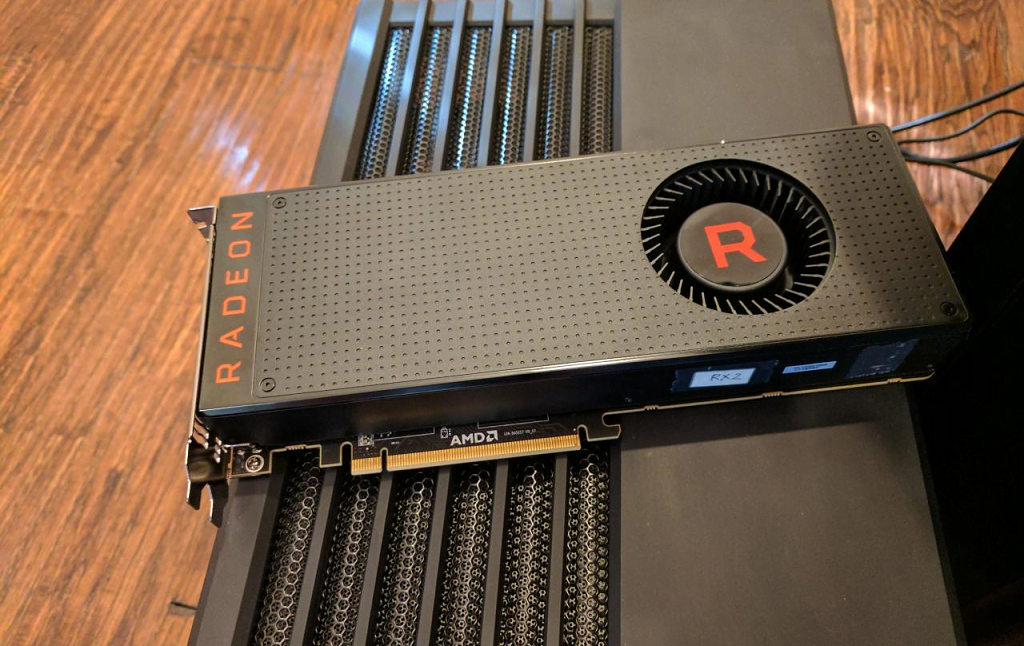 Comparisons with game system requirements are included, but remember that sometimes official requirements may reflect reality inaccurately.
Comparisons with game system requirements are included, but remember that sometimes official requirements may reflect reality inaccurately.
Average FPS
Here are the average frames per second in a large set of popular modern games across different resolutions:
| Full HD | 20 |
Popular games
- Full HD
Low Preset - Full HD
Medium Preset - Full HD
High Preset - Full HD
Ultra Preset - 1440p
High Preset - 1440p
Ultra Preset - 4K
High Preset - 4K
Ultra Preset
| Cyberpunk 2077 | 9 |
| Assassin’s Creed Odyssey | 15 | |
| Assassin’s Creed Valhalla | 12 | |
| Battlefield 5 | 22 | |
| Call of Duty: Modern Warfare | 17 | |
| Cyberpunk 2077 | 10−12 | |
| Far Cry 5 | 15 | |
| Far Cry New Dawn | 16−18 | |
| Forza Horizon 4 | 21−24 | |
| Hitman 3 | 14 | |
| Horizon Zero Dawn | 11 | |
| Red Dead Redemption 2 | 13 | |
| Shadow of the Tomb Raider | 14 | |
| Watch Dogs: Legion | 12 |
| Assassin’s Creed Odyssey | 12 | |
| Assassin’s Creed Valhalla | 7−8 | |
| Battlefield 5 | 18 | |
| Call of Duty: Modern Warfare | 20−22 | |
| Cyberpunk 2077 | 10−12 | |
| Far Cry 5 | 12 | |
| Far Cry New Dawn | 16−18 | |
| Forza Horizon 4 | 21−24 | |
| Hitman 3 | 14−16 | |
| Horizon Zero Dawn | 12−14 | |
| Metro Exodus | 4 | |
| Red Dead Redemption 2 | 4 | |
| Shadow of the Tomb Raider | 6 | |
| The Witcher 3: Wild Hunt | 14 | |
| Watch Dogs: Legion | 10 |
| Assassin’s Creed Odyssey | 14−16 | |
| Assassin’s Creed Valhalla | 7−8 | |
| Battlefield 5 | 16 | |
| Cyberpunk 2077 | 10−12 | |
| Far Cry 5 | 16−18 | |
| Far Cry New Dawn | 16−18 | |
| Forza Horizon 4 | 21−24 | |
| The Witcher 3: Wild Hunt | 9 | |
| Watch Dogs: Legion | 10−11 |
| Call of Duty: Modern Warfare | 10−12 | |
| Hitman 3 | 9−10 | |
| Horizon Zero Dawn | 12−14 | |
| Metro Exodus | 7−8 | |
| Red Dead Redemption 2 | 6−7 | |
| Shadow of the Tomb Raider | 10−11 | |
| The Witcher 3: Wild Hunt | 4−5 |
| Assassin’s Creed Odyssey | 5−6 | |
| Assassin’s Creed Valhalla | 1−2 | |
| Battlefield 5 | 8−9 | |
| Cyberpunk 2077 | 3−4 | |
| Far Cry 5 | 10−11 | |
| Far Cry New Dawn | 10−12 | |
| Forza Horizon 4 | 10−12 | |
| Watch Dogs: Legion | 4−5 |
| Call of Duty: Modern Warfare | 5−6 | |
| Hitman 3 | 6−7 | |
| Horizon Zero Dawn | 8−9 | |
| Metro Exodus | 2−3 | |
| Red Dead Redemption 2 | 4−5 | |
| Shadow of the Tomb Raider | 3−4 | |
| The Witcher 3: Wild Hunt | 5−6 |
| Assassin’s Creed Odyssey | 3−4 | |
| Assassin’s Creed Valhalla | 2−3 | |
| Battlefield 5 | 4−5 | |
| Cyberpunk 2077 | 2−3 | |
| Far Cry 5 | 6−7 | |
| Far Cry New Dawn | 9−10 | |
| Forza Horizon 4 | 8−9 | |
| Watch Dogs: Legion | 3−4 |
Relative perfomance
Overall Radeon RX Vega 5 performance compared to nearest competitors among notebook video cards.
NVIDIA GeForce MX350
103.16
NVIDIA GeForce GTX 770M
101.87
AMD Radeon RX 540
101.43
AMD Radeon RX Vega 5
100
AMD Radeon HD 6990M
95.84
Intel Iris Plus Graphics 655
95.27
NVIDIA GeForce GTX 950M
94.55
Radeon RX Vega 5 NVIDIA equivalent
The nearest Radeon RX Vega 5’s NVIDIA equivalent is GeForce GTX 770M, which is faster by 2% and higher by 3 positions in our performance rating.
GeForce GTX
770M
Compare
Here are some closest NVIDIA rivals to Radeon RX Vega 5:
NVIDIA GeForce GT 750M SLI
105.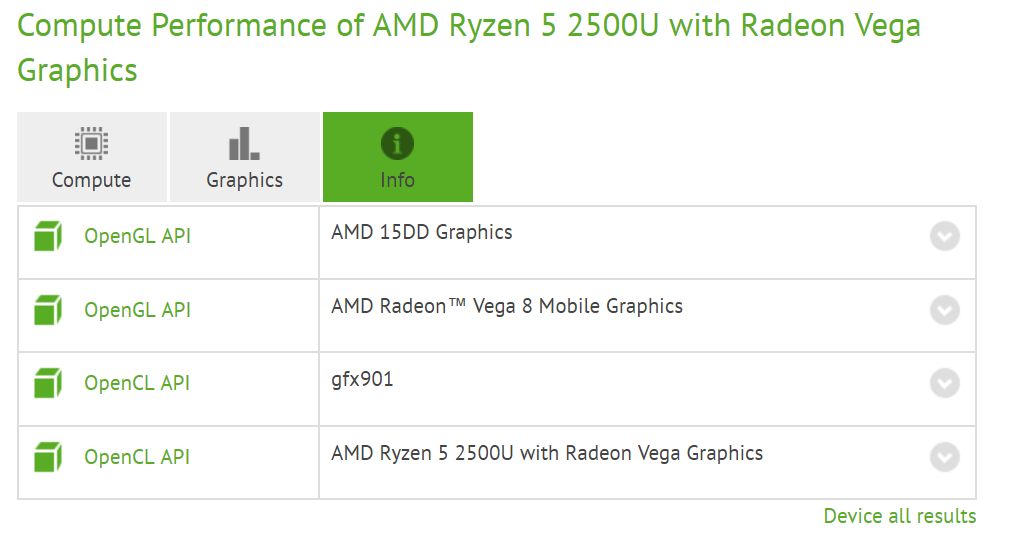 02
02
NVIDIA GeForce MX350
103.16
NVIDIA GeForce GTX 770M
101.87
AMD Radeon RX Vega 5
100
NVIDIA GeForce GTX 950M
94.55
NVIDIA GeForce GTX 850M
92.54
NVIDIA GeForce GTX 460M SLI
92.11
Similar GPUs
Here is our recommendation of several graphics cards that are more or less close in performance to the one reviewed.
Radeon RX
540
Compare
GeForce
MX350
Compare
Radeon
Graphics (Ryzen 7000)
Compare
Tiger Lake
U Xe Graphics G7
Compare
Iris Plus
Graphics 655
Compare
Radeon RX
Vega 9
Compare
Recommended processors
These processors are most commonly used with Radeon RX Vega 5 according to our statistics.
Ryzen 3
4300U
64.4%
Ryzen 5
3500U
4.5%
Ryzen 5
4500U
3.9%
Ryzen 3
3250U
2.5%
Ryzen 5
5500U
2.5%
Ryzen 3
3200U
1.9%
Ryzen 5
2500U
1.1%
Ryzen 3
5300U
0. 8%
8%
Ryzen 5
3400G
0.7%
Ryzen 5
4600H
0.6%
User rating
Here you can see the user rating of the graphics card, as well as rate it yourself.
Questions and comments
Here you can ask a question about Radeon RX Vega 5, agree or disagree with our judgements, or report an error or mismatch.
Please enable JavaScript to view the comments powered by Disqus.
AMD Radeon RX Vega 5 Specs
The AMD Radeon RX Vega 5 Graphics comes integrated with AMD Ryzen 3 4000 series. Launched in January of 2020 the iGPU is based on Vega architecture comes with 5 CUs clocked at 1.4 GHz. The Vega 5 graphics have a performance just slightly below Vega 6 graphics and is capable of gaming at medium setting with decent frame rates.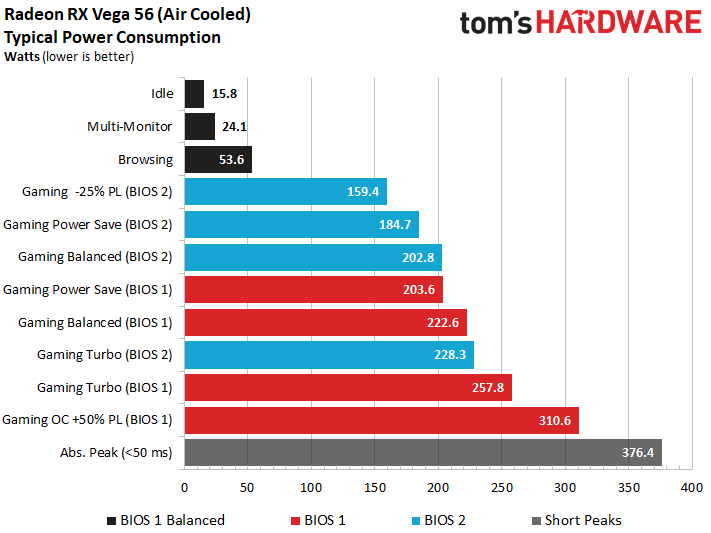
The performance of the Vega 5 Graphics depends on a number of factors such as the configured TDP (12-25 Watts), Clock Speed, Cooling Solution, and RAM configuration. The integrated GPU greatly benefits from fast dual-channel memory. The Renoir APUs now also support the LPDDR4x memory the gives the Renoir APU some performance. The AMD Radeon RX Vega 5 (Ryzen 4000) graphics have a performance that should be comparable to that of Nvidia Mx130.
AMD SmartShift
AMD SmartShift allows the power to be diverted intelligently between CPU and GPU to maximize performance in specialized tasks such as Gaming and Rendering.
How is AMD Radeon RX Vega 5 (Ryzen 4000 Series) for Photo Editing
Image editing applications such as photoshop should relatively smooth with vega 5 as it is paired with the 4000 series CPU’s which are great for editing workloads. So, if you are editing on a system with a 1080p display it will be a relatively smooth experience. However, if have are with a 4k display and simultaneously working with large files you will experience some lag.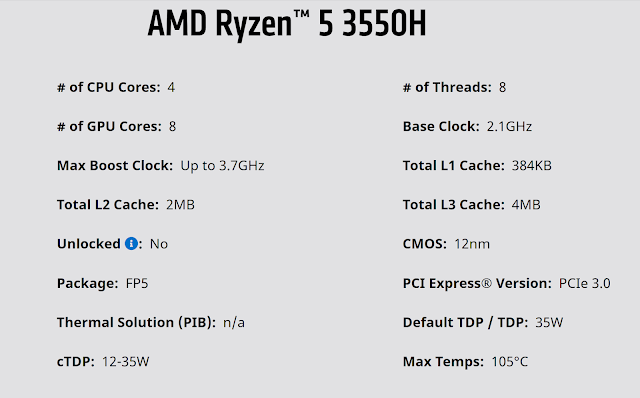
How is AMD Radeon RX Vega 5 (Ryzen 4000) for Video Editing
It should be able to handle basic 1080p editing workloads with little to no difficulty. Since when it comes to video editing CPU is far more important than GPU and the 4000 series CPUs it is paired with are all well equipped for handling basic editing workloads.
Gaming Performance/Benchmarks
The AMD RX Vega 5 Graphics should be able to handle most modern games that are not very graphic demanding such as League of Legends, Dota 2, Minecraft, CS: GO, GTA 5, and Fortnite. But consider this it only has 10 percent of the benchmark performance when compared with industry-leading Nvidia RTX 3090.
Gaming Benchmarks
- below 20 FPS– Unplayable/laggy/stuttery
- 20-30 FPS– Below average, acceptable for some laggy for others.
- 30-45 FPS– Average, acceptable for most people.
- 45-60 FPS– Above Average, Smooth animation/No lag.

- 60-90 FPS– Semi-Professional.
- Above 90 FPS– God tier/Hardcore/Professional.
Fortnite
- Low ( 720p): 88 FPS
- Mid ( 1080p): 42 FPS
- High ( 1080p): 22 FPS
- Ultra ( 1080p): 18 FPS
PUBG ( PlayerUnknown’s Battlegrounds)
- Low ( 720p): 48 FPS
- Mid ( 1080p): 21 FPS
- High (1080p): 18 FPS
- Ultra (1080p): 9 FPS
GTA V
- Low ( 768p): 78 FPS
- Mid ( 768p): 71 FPS
- High ( 1080p): 22 FPS
- Ultra ( 1080p): 11 FPS
League of Legends
- Low (768p): 118 FPS
- Mid (1080p): 103 FPS
- High (1080p): 91 FPS
Overwatch
- Low (720p): 107 FPS
- Mid (768p): 80 FPS
- High (1080p): 42 FPS
- Ultra (1080p): 22 FPS
Apex Legends
- Low (720p): 51 FPS
- Mid (1080p): 19 FPS
- High (1080p): 16 FPS
- Ultra (1080p): 14 FPS
Overview of video card Radeon Vega 5
Description
Specifications
| Release year | 2020 |
| Segment | integrated graphics core |
| Base frequency | 300 Mhz |
| Game frequency | — |
| Turbo frequency | 1400 Mhz |
| Tire | — |
| Memory size | dynamic, up to 2 gigabytes |
| Stream Processors | 320 |
| Texture blocks | 20 |
| Rasterizers | 7 |
| Architecture (core) | GCN 5. |
| Process | 7nm |
| TDP | 12W |
Supported APIs, Technologies: OpenCL 2.0, OpenCL 4.6, DirectX 11, DirectX 12, Shader Model 6.0, AMD FreeSync
Supported operating systems: Windows 10 x86-x64, Linux x86-x64
Processors used: Ryzen 3 4300U, Ryzen 3 PRO 4450U
Radeon Vega 5 graphics core overview
Vega GPU Radeon 5 appeared in 2020 as part of AMD’s budget mobile APUs. The GPU is made according to technological standards of 7nm and carries the GCN 5.0 architecture, has a base frequency of 300 megahertz and a maximum frequency of 1400 megahertz. The graphics core does not have its own video memory, but takes memory from the RAM (no more than two gigabytes), which makes the graphics subsystem extremely dependent on the frequency of the RAM (the higher the frequency, the better the GPU performance). The core is extremely sensitive to the dual-channel RAM mode (when there are two memory sticks of the same size and frequency) and shows significantly better performance in this mode compared to the single-channel mode. Radeon Vega 5 is a low cost integrated graphics card that will provide comfortable performance in undemanding modern games such as DOTA2, CS:Source, CS:GO, World of Tanks with medium graphics settings and 720p(1280*720) or low graphics settings and resolutions. 1080p(1920*1080). In modern demanding games: The Witcher 3, Red Dead Redemption 2, at 720p(1280*720) resolution and minimum graphics settings, the frame rate will be 25-30, with subsidence in the most difficult scenes up to 15-20. In older games like GTA V and Tomb Raider 2013, Radeon Vega 5 will provide a high comfortable amount of FPS at medium graphics settings.
Additional information:
— To further increase performance in games, turn off the «vertical sync» option in the graphics settings.
Radeon Vega 5 test in games:
Table of processors equipped with Radeon Vega 5 + frequency characteristics of the video core.
| Model | Core | Cores/Threads | Frequency Turbo | Video core | Process | Frequency Base_Turbo |
| Ryzen 3 PRO 4450U | Zen2 (7nm) | 4/8 | 2.5/3.7GHz | Vega5 | 7nm | 300-1400MHz |
| Ryzen 3 4300U | Zen2 (7nm) | 4/4 | 2.7/3.7GHz | Vega5 | 7nm | 300-1400MHz |
Download Radeon Vega 5 graphics driver
Radeon RX Vega 5 graphics card [in 7 benchmarks]
Radeon RX Vega 5
- Interface
- Core frequency
- Video memory size
- Memory type
- Memory frequency
- Maximum resolution
Description
AMD started Radeon RX Vega 5 sales on January 7, 2020. This is Vega architecture notebook card based on 7 nm manufacturing process and primarily aimed at gamers.
This is Vega architecture notebook card based on 7 nm manufacturing process and primarily aimed at gamers.
Power consumption 15 W.
It provides poor performance in tests and games at the level of
6.97%
from the leader, which is NVIDIA GeForce RTX 4090.
GeForce RTX
4090
Compare
General information
Information about the type (desktop or laptop) and architecture of Radeon RX Vega 5, as well as when sales started and cost at that time.
Features
Radeon RX Vega 5’s general performance parameters such as number of shaders, GPU core clock, manufacturing process, texturing and calculation speed. They indirectly speak of Radeon RX Vega 5’s performance, but for precise assessment you have to consider its benchmark and gaming test results.
| Number of stream processors |
RAM
Parameters of the memory installed on Radeon RX Vega 5 — type, size, bus, frequency and bandwidth. For video cards built into the processor that do not have their own memory, a shared part of the RAM is used.
| Shared memory | — |
API support
APIs supported by Radeon RX Vega 5, including their versions.
| DirectX | 12_1 |
Benchmark tests
9008
These are the results of Radeon RX Vega 5 rendering performance tests in non-gaming benchmarks. The overall score is set from 0 to 100, where 100 corresponds to the fastest video card at the moment.
Overall benchmark performance
This is our overall performance rating. We regularly improve our algorithms, but if you find any inconsistencies, feel free to speak up in the comments section, we usually fix problems quickly.
RX Vega 5
6.97
- 3DMark Vantage Performance
- 3DMark 11 Performance GPU
- 3DMark Cloud Gate GPU
- 3DMark Fire Strike Score
- 3DMark Fire Strike Graphics
- 3DMark Ice Storm GPU
- Unigine Heaven 3.0
3DMark Vantage Performance
3DMark Vantage is an outdated DirectX 10 benchmark. It loads the graphics card with two scenes, one of a girl running away from some kind of military base located in a sea cave, and the other of a space fleet attacking a defenseless planet. Support for 3DMark Vantage was discontinued in April 2017 and it is now recommended to use the Time Spy benchmark instead.
Benchmark coverage: 16%
RX Vega 5
11704
3DMark 11 Performance GPU
3DMark 11 is Futuremark’s legacy DirectX 11 benchmark. He used four tests based on two scenes: one is several submarines exploring a sunken ship, the other is an abandoned temple deep in the jungle. All tests make extensive use of volumetric lighting and tessellation and, despite being run at 1280×720, are relatively heavy. Support for 3DMark 11 ended in January 2020 and is now being replaced by Time Spy.
Benchmark coverage: 16%
RX Vega 5
3535
3DMark Cloud Gate GPU
Cloud Gate is a legacy benchmark that uses DirectX 11 feature level 10, used to test home PCs and low-end laptops. It displays several scenes of some strange teleportation device launching spaceships into the unknown at a fixed resolution of 1280×720. As with the Ice Storm benchmark, it was deprecated in January 2020 and 3DMark Night Raid is now recommended instead.
Benchmark coverage: 13%
RX Vega 5
18282
3DMark Fire Strike Score
Benchmark coverage: 13%
RX Vega 5
2232
3DMark Fire Strike Graphics
Fire Strike is a DirectX 11 benchmark for gaming PCs. It features two separate tests showing a fight between a humanoid and a fiery creature that appears to be made of lava. Using resolution 1920×1080, Fire Strike shows quite realistic graphics and is quite demanding on hardware.
Benchmark coverage: 13%
RX Vega 5
2438
3DMark Ice Storm GPU
Ice Storm Graphics is an obsolete benchmark, part of the 3DMark package. Ice Storm has been used to measure the performance of entry-level laptops and Windows-based tablets. It uses DirectX 11 feature level 9 to render a battle between two space fleets near a frozen planet at 1280×720 resolution. Support for Ice Storm ended in January 2020, now the developers recommend using Night Raid instead.
Benchmark coverage: 8%
RX Vega 5
128628
Unigine Heaven 3.0
This is an old DirectX 11 based benchmark using the Unigine 3D game engine from the Russian company of the same name. It depicts a medieval fantasy city spread over several floating islands. Version 3.0 was released in 2012 and was replaced by Heaven 4.0 in 2013, which introduced several minor improvements, including a newer version of the Unigine engine.
It depicts a medieval fantasy city spread over several floating islands. Version 3.0 was released in 2012 and was replaced by Heaven 4.0 in 2013, which introduced several minor improvements, including a newer version of the Unigine engine.
Benchmark coverage: 4%
RX Vega 5
26
Is the Radeon RX Vega 5 good for gaming?
FPS in popular games on Radeon RX Vega 5, as well as compliance with system requirements. Remember that the official requirements of the developers do not always match the data of real tests.
Average FPS
Here are the average FPS values for a large selection of popular games at various resolutions:
| Full HD | 20 |
Medium Preset
High Preset
Ultra Preset
High Preset
Ultra Preset
High Preset
Ultra Preset
| Cyberpunk 2077 | 9 |
| Assassin’s Creed Odyssey | 15 | |
| Assassin’s Creed Valhalla | 12 | |
| Battlefield 5 | 22 | |
| Call of Duty: Modern Warfare | 17 | |
| Cyberpunk 2077 | 10-12 | |
| Far Cry 5 | 15 | |
| Far Cry New Dawn | 16-18 | |
| Forza Horizon 4 | 21-24 | |
| Hitman 3 | 14 | |
| Horizon Zero Dawn | 11 | |
| Red Dead Redemption 2 | 13 | |
| Shadow of the Tomb Raider | 14 | |
| Watch Dogs: Legion | 12 |
| Assassin’s Creed Odyssey | 12 | |
| Assassin’s Creed Valhalla | 7-8 | |
| Battlefield 5 | 18 | |
| Call of Duty: Modern Warfare | 20-22 | |
| Cyberpunk 2077 | 10-12 | |
| Far Cry 5 | 12 | |
| Far Cry New Dawn | 16-18 | |
| Forza Horizon 4 | 21-24 | |
| Hitman 3 | 14-16 | |
| Horizon Zero Dawn | 12-14 | |
| Metro Exodus | 4 | |
| Red Dead Redemption 2 | 4 | |
| Shadow of the Tomb Raider | 6 | |
| The Witcher 3: Wild Hunt | 14 | |
| Watch Dogs: Legion | 10 |
| Assassin’s Creed Odyssey | 14-16 | |
| Assassin’s Creed Valhalla | 7-8 | |
| Battlefield 5 | 16 | |
| Cyberpunk 2077 | 10-12 | |
| Far Cry 5 | 16-18 | |
| Far Cry New Dawn | 16-18 | |
| Forza Horizon 4 | 21-24 | |
| The Witcher 3: Wild Hunt | 9 | |
| Watch Dogs: Legion | 10-11 |
| Call of Duty: Modern Warfare | 10-12 | |
| Hitman 3 | 9-10 | |
| Horizon Zero Dawn | 12-14 | |
| Metro Exodus | 7-8 | |
| Red Dead Redemption 2 | 6-7 | |
| Shadow of the Tomb Raider | 10-11 | |
| The Witcher 3: Wild Hunt | 4-5 |
| Assassin’s Creed Odyssey | 5-6 | |
| Assassin’s Creed Valhalla | 1-2 | |
| Battlefield 5 | 8-9 | |
| Cyberpunk 2077 | 3-4 | |
| Far Cry 5 | 10-11 | |
| Far Cry New Dawn | 10-12 | |
| Forza Horizon 4 | 10-12 | |
| Watch Dogs: Legion | 4-5 |
| Call of Duty: Modern Warfare | 5-6 | |
| Hitman 3 | 6-7 | |
| Horizon Zero Dawn | 8-9 | |
| Metro Exodus | 2-3 | |
| Red Dead Redemption 2 | 4-5 | |
| Shadow of the Tomb Raider | 3-4 | |
| The Witcher 3: Wild Hunt | 5-6 |
| Assassin’s Creed Odyssey | 3-4 | |
| Assassin’s Creed Valhalla | 2-3 | |
| Battlefield 5 | 4-5 | |
| Cyberpunk 2077 | 2-3 | |
| Far Cry 5 | 6-7 | |
| Far Cry New Dawn | 9-10 | |
| Forza Horizon 4 | 8-9 | |
| Watch Dogs: Legion | 3-4 |
Relative performance
Radeon RX Vega 5 overall performance compared to its closest competitors in notebook graphics cards.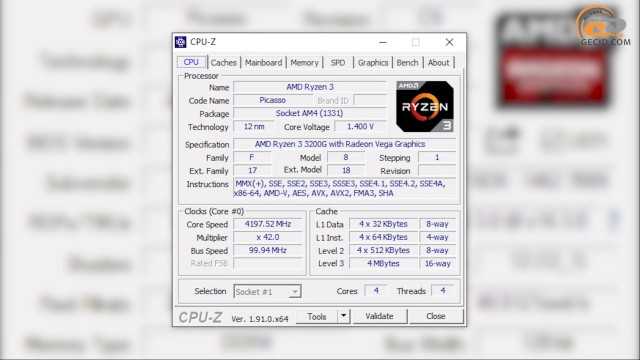
NVIDIA GeForce MX350
103.16
NVIDIA GeForce GTX 770M
101.87
AMD Radeon RX 540
101.43
AMD Radeon RX Vega 5
100
AMD Radeon HD 6990M
95.84
Intel Iris Plus Graphics 655
95.27
NVIDIA GeForce GTX 950M
94.55
Competitor from NVIDIA
The closest competitor of Radeon RX Vega 5 from NVIDIA is GeForce GTX 770M, which is 2% faster on average and higher by 3 positions in our rating.
GeForce GTX
770M
Compare
Here are some NVIDIA Radeon RX Vega 5 closest competitors:
NVIDIA GeForce GT 750M SLI
105.02
NVIDIA GeForce MX350
103.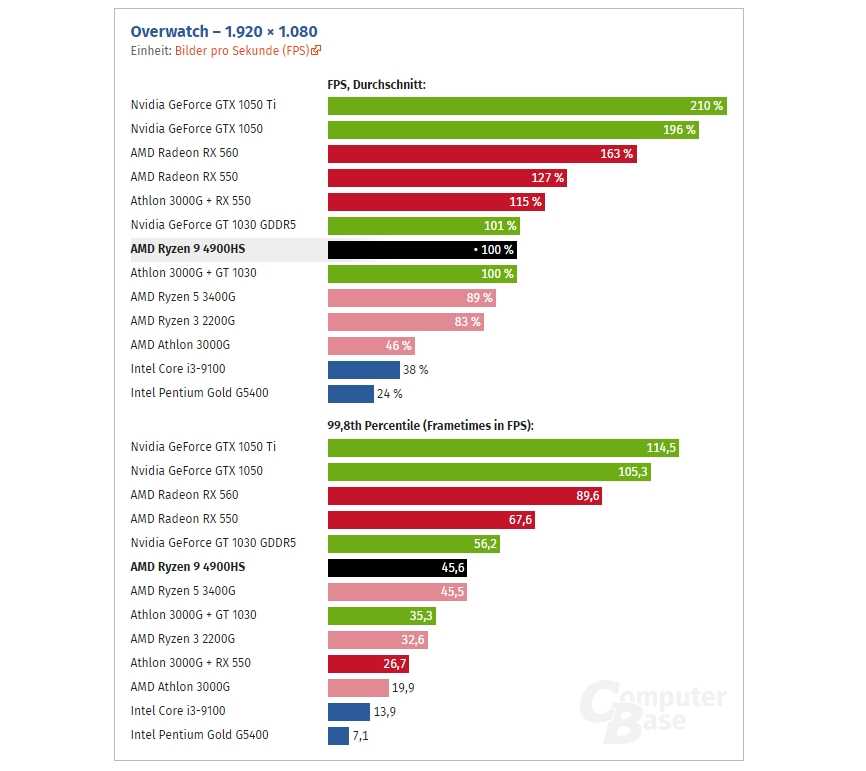 16
16
NVIDIA GeForce GTX 770M
101.87
AMD Radeon RX Vega 5
100
NVIDIA GeForce GTX 950M
94.55
NVIDIA GeForce GTX 850M
92.54
NVIDIA GeForce GTX 460M SLI
92.11
Other video cards
Here we recommend several video cards that are more or less similar in performance to the reviewed one.
Radeon RX
540
Compare
GeForce
MX350
Compare
Radeon
Graphics (Ryzen 7000)
Compare
Iris Plus
Graphics 655
Compare
Radeon RX
Vega 9
Compare
GeForce
MX330
Compare
Recommended Processors
According to our statistics, these processors are most often used with Radeon RX Vega 5.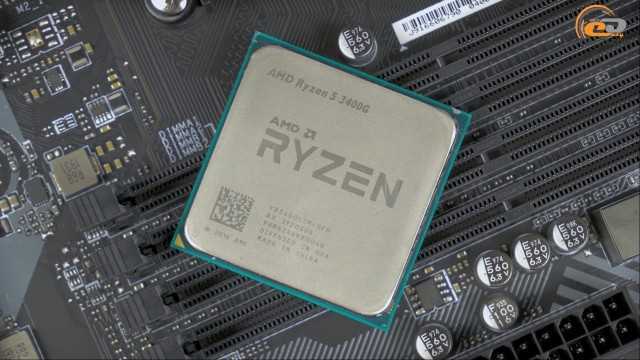
Ryzen 3
4300U
64.4%
Ryzen 5
3500U
4.5%
Ryzen 5
4500U
3.9%
Ryzen 3
3250U
2.5%
Ryzen 5
5500U
2.5%
Ryzen 3
3200U
1.9%
Ryzen 5
2500U
1.1%
Ryzen 3
5300U
0.8%
Ryzen 5
3400G
0.7%
Ryzen 5
4600H
0.
